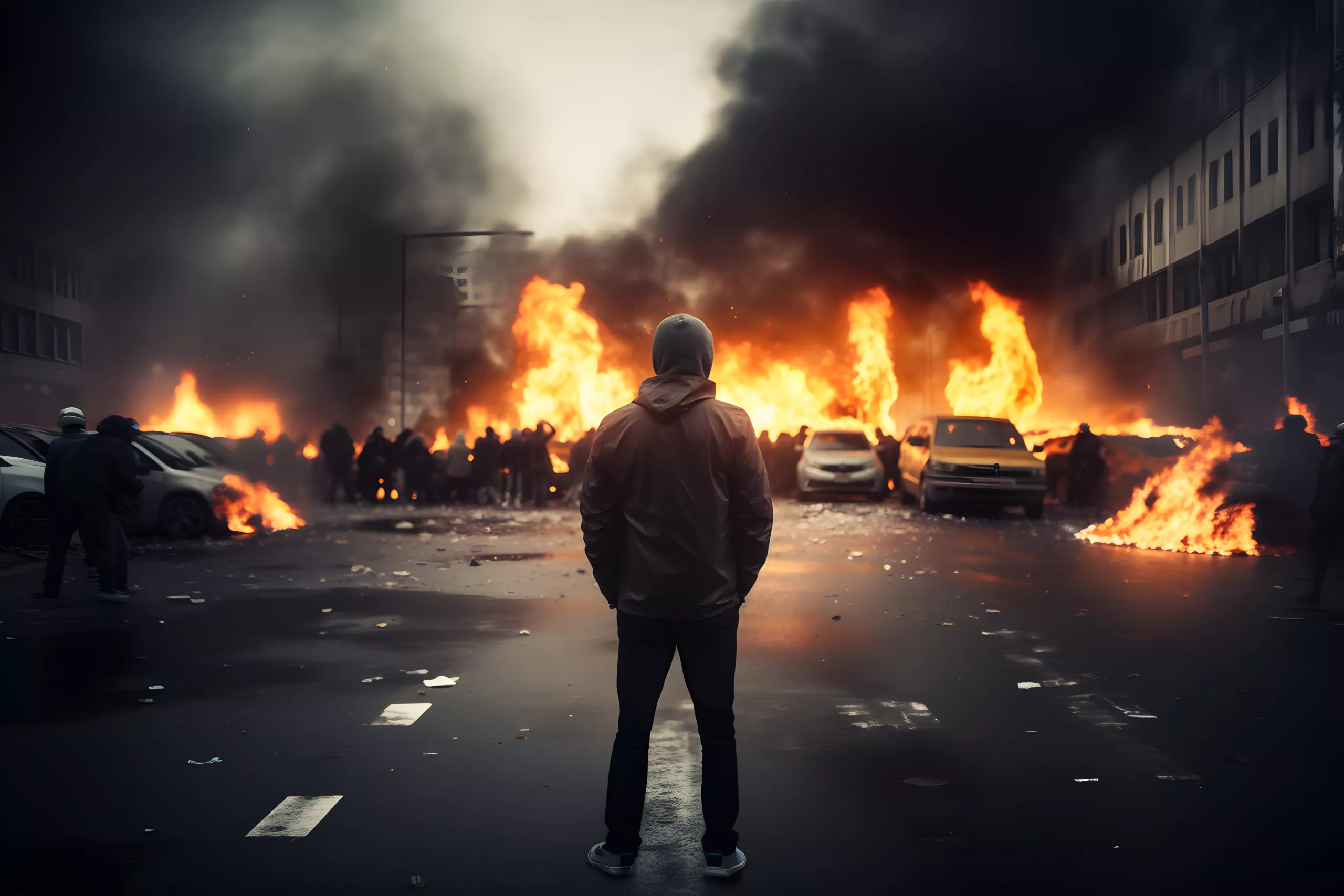Imagine this scenario: It’s a busy evening and your ambulance pulls up to chaos – flames billow from a row of vehicles in a campus parking lot, including a Tesla that’s fully engulfed. Students are fleeing in panic from what began as a protest that has now turned violent. As an EMS responder, the scene triggers a cascade of thoughts: Is this just a riot, or could it be something more? In today’s world, even events like college demonstrations or arson vandalism may fall under the umbrella of terrorism if they meet certain criteria. This post, written from the perspective of an EMS provider arriving at such an incident, will explore how to recognize potential terrorism, review official definitions from DHS and FBI, and highlight key safety and operational considerations – from scene safety and communication to PPE and working alongside law enforcement.
Understanding Terrorism: Official Definitions
Before diving into response tactics, it’s important to understand what legally constitutes “terrorism.” According to the U.S. Department of Homeland Security (DHS), terrorism is defined as “any activity that involves an act that (i) is dangerous to human life or potentially destructive of critical infrastructure or key resources; and (ii) is a violation of U.S. criminal laws; and appears to be intended (i) to intimidate or coerce a civilian population; (ii) to influence government policy by intimidation or coercion; or (iii) to affect the conduct of a government by mass destruction, assassination, or kidnapping”. In simpler terms, terrorism involves violent or dangerous illegal acts intended to intimidate or influence populations or governments.
The Federal Bureau of Investigation (FBI) further classifies terrorism by source of motivation. The FBI defines international terrorism as “violent, criminal acts committed by individuals and/or groups who are inspired by, or associated with, designated foreign terrorist organizations or nations”, whereas domestic terrorism refers to “violent, criminal acts committed by individuals and/or groups to further ideological goals stemming from domestic influences, such as those of a political, religious, social, racial, or environmental nature”. In other words, if an act of violence is motivated by ideology but originates within the United States (without foreign direction), it falls into the domestic terrorism category. Both DHS and FBI definitions emphasize violence, illegality, and intent to intimidate or coerce as core elements of terrorism.
From Protests to Arson: Recent Examples in the U.S.
Current events illustrate how the line between a protest or vandalism and “terrorism” can blur under these definitions. For instance, in early 2025 the U.S. Department of Justice announced it was probing certain college campus protests – specifically some heated demonstrations over the Gaza war at Columbia University – for possible violations of terrorism laws (US to probe Columbia protests for terrorism violations, official says | Reuters). In that case, officials suggested that what began as political protests might have crossed into potential terrorism if any organized intent to intimidate or support a terrorist group was involved. While civil rights groups raised First Amendment concerns, federal authorities pointed to the possibility that even domestic student activism could trigger terrorism statutes if it involved threats or support for designated terrorist organizations (US to probe Columbia protests for terrorism violations, official says | Reuters).
Another example hit closer to home for first responders: a recent spate of arson attacks targeting Tesla vehicles and charging stations across several states. In March 2025, federal charges were brought against individuals who used Molotov cocktails to burn Tesla cars and facilities, and the U.S. Attorney General bluntly labeled these incidents “a wave of domestic terrorism against Tesla properties” ( Office of Public Affairs | Attorney General Pamela Bondi Announces Severe Charges Against Violent Tesla Arsonists | United States Department of Justice). In one incident, a perpetrator threw multiple firebombs at a Tesla dealership (while armed with an AR-15 rifle), and in another, a suspect scrawled anti-government graffiti before igniting charging stations ( Office of Public Affairs | Attorney General Pamela Bondi Announces Severe Charges Against Violent Tesla Arsonists | United States Department of Justice). These acts went beyond mere property vandalism – they were organized, ideologically driven attacks intended to instill fear and cause disruption, which fits the federal definition of domestic terrorism.
For EMS providers, the takeaway is that scenes like violent protests or coordinated arsons may be treated as terrorist incidents by authorities. When you arrive at what appears to be civil unrest or an act of sabotage, you should be alert to the possibility that it’s considered terrorism behind the scenes. This designation can escalate the response: law enforcement will swarm, federal agencies might get involved, and the risks on scene can be significant. Whether or not we, as EMS, concern ourselves with the politics of the incident, we must respond with heightened caution and preparedness when terrorism is even a possibility.

